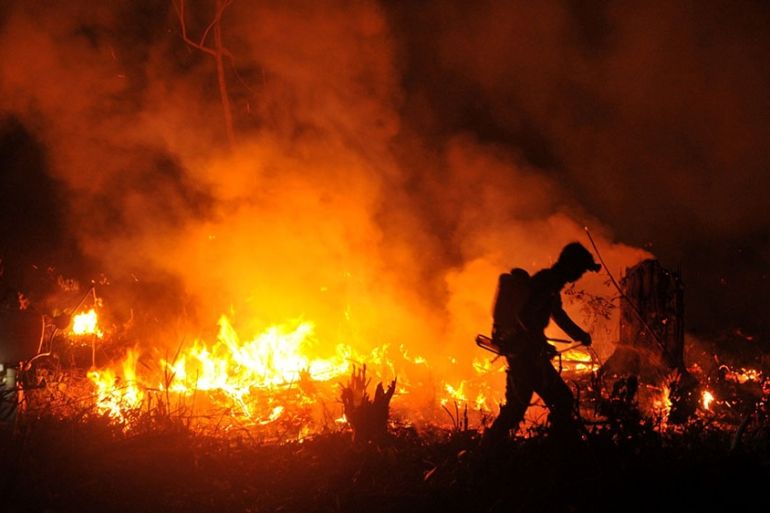Forest fires cost Indonesia $5.2bn and counting: World Bank
Indonesia recorded significant negative economic effects from the fires between June and October, a report showed.

The total damage and economic loss from forest fires in Indonesia this year amounted to at least $5.2bn, equal to 0.5 percent of gross domestic product, the World Bank said in a report on Wednesday.
The estimate was based on its assessment in eight affected provinces from June to October 2019, though analysts at the multinational bank said fires had continued to rage until November.
Keep reading
list of 3 itemsIndonesia province shuts schools as haze from fires returns
‘Toxic cocktail’: The horror of Indonesia’s haze
“The forest and land fires, as well as the resulting haze, led to significant negative economic impacts, estimated at $157m in direct damage to assets and $5bn in losses from affected economic activities,” the World Bank wrote in the report.
More than 900,000 people reported respiratory illnesses, 12 national airports halted operations, and hundreds of schools in Indonesia, Malaysia and Singapore had to temporarily close due to the fires.
Drifting smoke at the height of the dry season in September triggered a diplomatic spat between Kuala Lumpur and Jakarta.
More than 942,000 hectares (2.3 million acres) of forests and land were burned this year, the most since devastating fires in 2015, when Indonesia saw 2.6 million hectares (6.4 million acres) burned, according to official figures.
Officials said the spike was due to El Nino weather patterns lengthening the dry season.
The World Bank also estimated an 0.09 and 0.05 percentage-points reduction in Indonesia’s economic growth in 2019 and 2020, respectively, due to the fires. Its growth forecast for Indonesia is 5 percent for 2019 and 5.1 percent for 2020.
The blazes were “manmade and have become a chronic problem annually since 1997”, because fire is considered the cheapest method to prepare land for cultivation, the World Bank said.
Because about 44 percent of the areas burned in 2019 were in peatlands, carbon emissions from Indonesia’s fires were estimated to be almost double the emissions from the fires in the Brazilian Amazon this year.
The European Centre for Medium-Range Weather Forecast estimated a total of 720 megatonnes (720 billion kg) of carbon dioxide emissions came from Indonesian forest fires in January-November this year.
Longer-term effects of repeated fires were not included in this estimate, the World Bank said.
Repeated haze exposure would reduce health and education quality and damage the global image of palm oil – an important commodity for Indonesia.